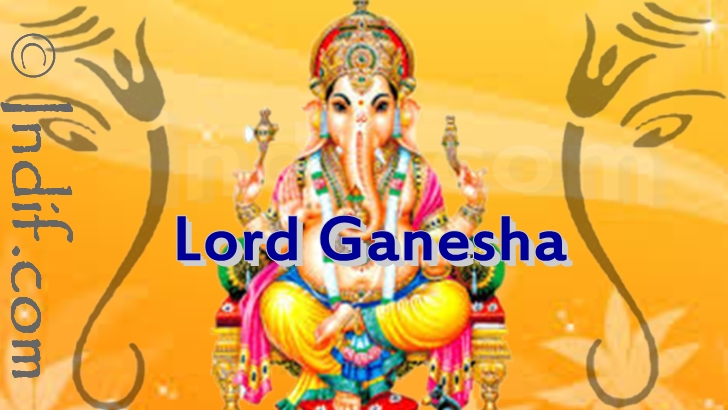![]()
In Hindu mythology, the elephant-headed deity, Ganesha is the lord of Beginnings and remover of obstacles. He is probably the most worshiped divinity in the hindu shrines. Lord Ganesha is the son of Lord Shiva and the Divine Mother Parvati, the husband of Bharati, Riddhi and Siddhi. Ganesha removes all obstacles and ensures success in human endeavors. He is an archetype of Wisdom and Beneficence. The Hindu deity in a human form but with the head of an elephant - represents the power of the Supreme Being that removes obstacles and ensures success in human endeavors. For this reason, Hindus worship Ganesha first before beginning any religious, spiritual or worldly activity The mouse is the vehicle of Ganesha, signifying that one must control ego in order for wisdom to shine forth.
Story of Ganesha's Origin:
There are many and various stories about the events of ganesha's life. The most popular story of his origin is -
Once Parvati, wife of Shiva, using the scurf of her body made the figure of a boy and breathed life into him. She asked the boy to guard the house while she bathed. Shiva was absent at this point. When he returned, the boy bared the way and in anger Shiva cut off his head. When Parvati emerged from her bathing and saw the corps, she said that she considered the boy her son. Shiva promised to replace the head and sent his attendents to bring the head of anyone found sleeping with their head pointing north. The attendents found a baby elephant in that position and bought his head, which Shiva attached and brought the boy back to life and told Parvati that prayers will be offered to Ganesha before any ceremony.
Lord Shiva made their new son the leader of his ganas, semi-divine attendants, that's how the boy with elephant-head got the name of Ganesha, Ganesh's name literally means "Lord of Gana," while Isha means lord or leader, or Ganpati.
In one popular story Parvati declares a race around the universe between Ganesha and his younger brother Kartikeya. Kartikeya takes off on his vehicle Peacock swift as lightining leaving the slow Ganesha with his rat vehicle far behind. Ganesha thought for a moment and realized that his mother and father themselves constitute the whole universe, so he just walks around his parents and wins the race.
Ganesha appears im many poses and forms, but is most often sitting.He is shown with a large human body of pink complexion and an elephant's head with one tusk. He is riding on or attended by a rat. He has four hands, three of which hold a goad and an axe, a snare, and modak sweet; with the fouth hand he offers blessings to his devotees.
Ganesha can also be found in other religions beside Hinduism. In Jainism, he can be seen as a remover of obstacle; in Budhism, Ganesha is found as a Tantric deity. Ganesha is also mentioned in southeast Asian arts of Tibet and China.











